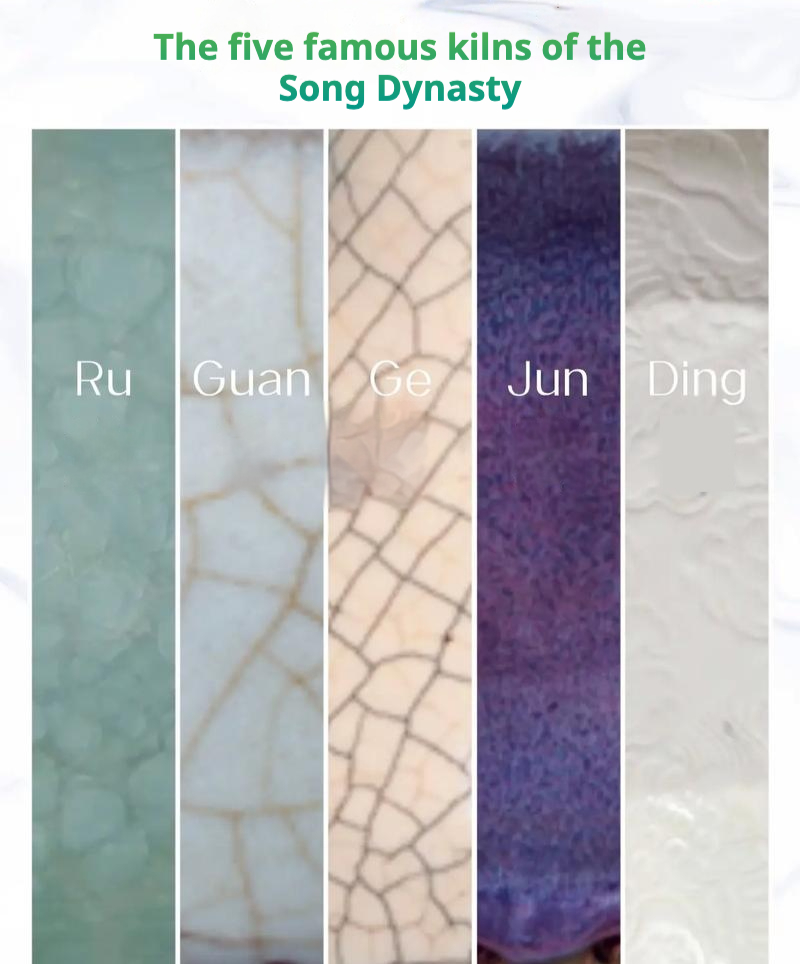The five famous kilns of the Song Dynasty, namely Ru Kiln, Guan Kiln, Ge Kiln, Ding Kiln, and Jun Kiln, represent the peak of ceramic art in Chinese history.
Origins
During the Song Dynasty, with the prosperity of the economy and the pursuit of spiritual and cultural life, the ceramic industry flourished. The imperial court and the upper – class society had high – end demands for porcelain, which promoted the emergence and development of these five famous kilns. They were mainly located in today’s Henan, Hebei, and Zhejiang provinces, where high – quality raw materials and excellent craftsmanship were abundant.
- Ru Kiln: It was mainly for imperial use. Ru porcelain is famous for its sky – blue glaze, which is as smooth as jade. The glaze has a unique luster, and the pieces often have fine cracks, adding a special aesthetic feeling.
- Guan Kiln: There were Northern Song Guan Kiln and Southern Song Guan Kiln. The porcelain has a thick glaze, with colors like powder blue and beige. The cracks on the glaze, known as “ice cracks”, are regular and beautiful.
- Ge Kiln: Its most distinctive feature is the “gold – wire and iron – thread” crackles. The thick black cracks are interspersed with fine golden cracks, creating a unique visual effect. The glaze color is usually grayish – white or yellowish – gray.
- Ding Kiln: Specialized in white porcelain, Ding porcelain has a thin and white body. The glaze is bright and clean, and it often uses decorative techniques such as carving, scratching, and printing.
- Jun Kiln: Renowned for its magnificent and colorful kiln – change glazes. The glaze colors, like rose purple and begonia red, change naturally during the firing process, presenting a wonderful visual feast.

Pursuit of Craft Excellence
These kilns epitomized the Song Dynasty’s obsession with “zhì” (craft mastery) and “yǐn” (refined taste). Artisans viewed their work not as mere production, but as a dialogue with nature—controlling fire and earth to create objects that balanced utility and transcendence. The limited output, rigorous standards, and integration of philosophy into craft made them symbols of “the pinnacle of artistry”, ensuring their legacy as timeless treasures
